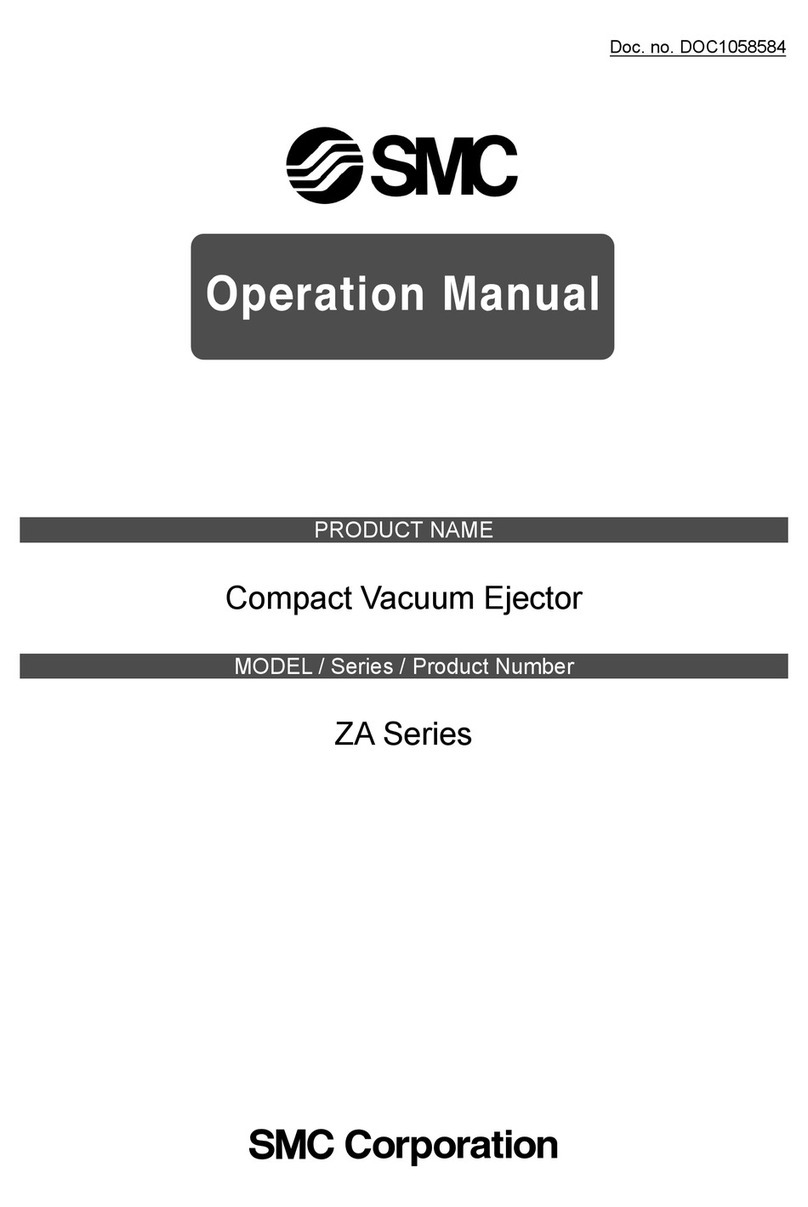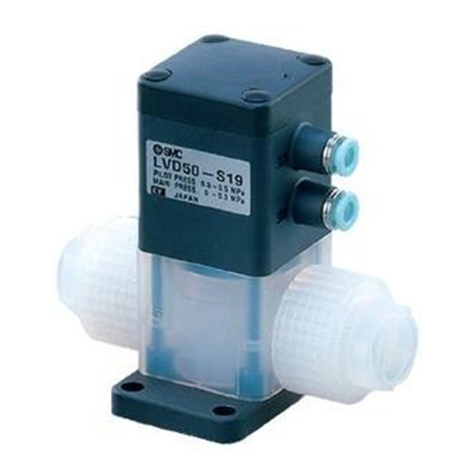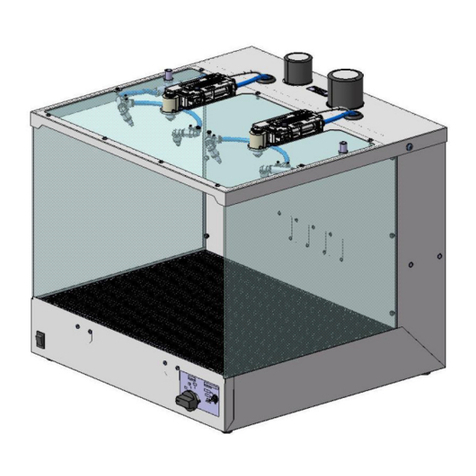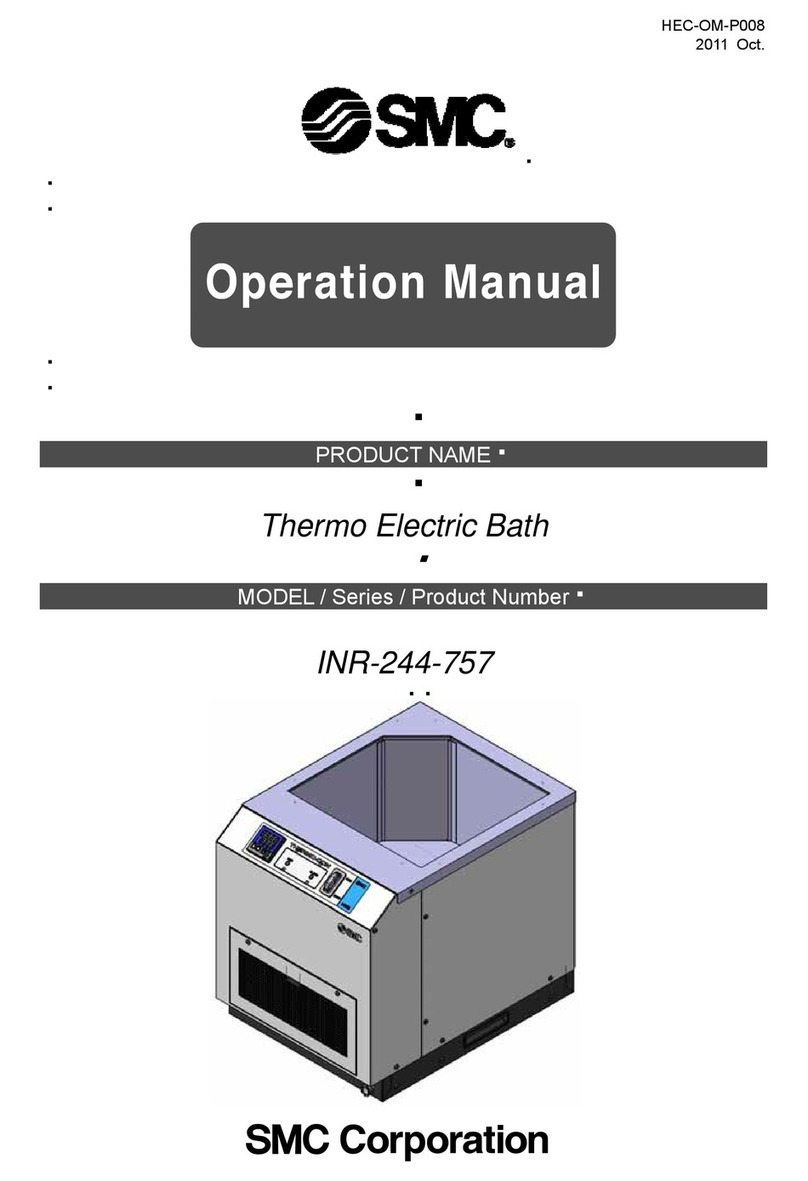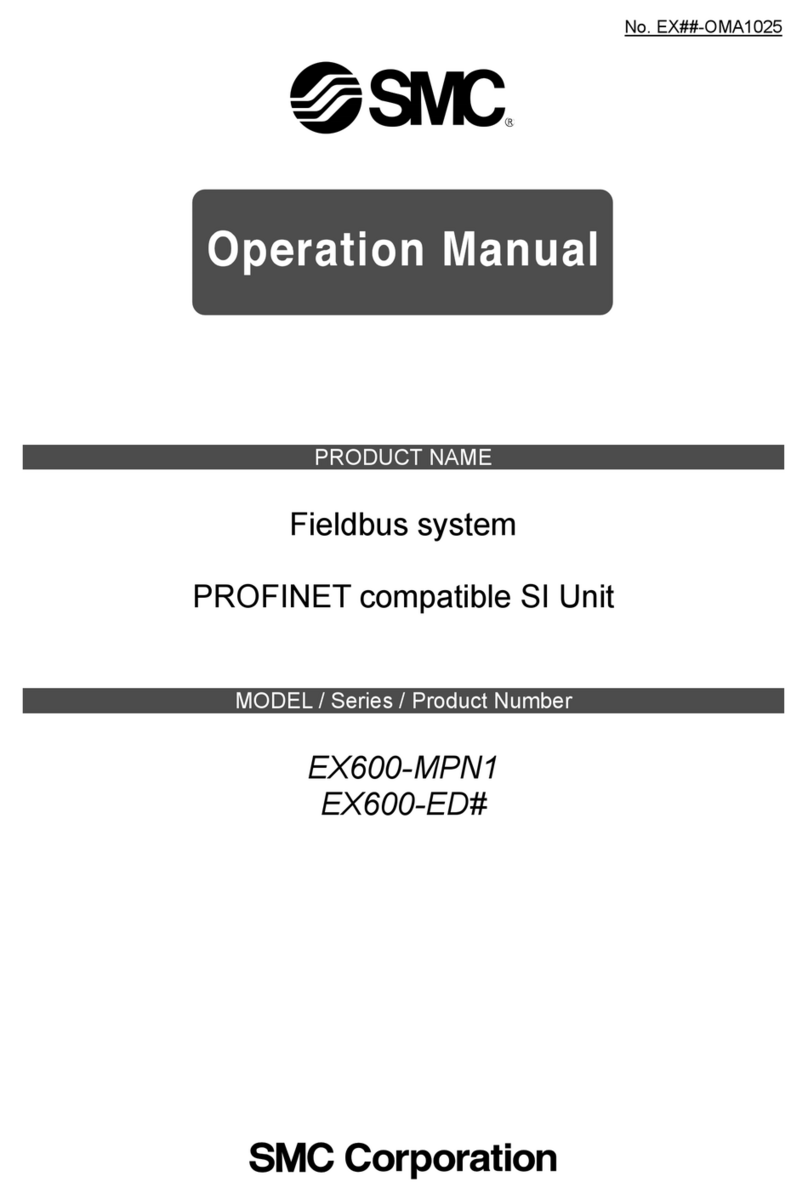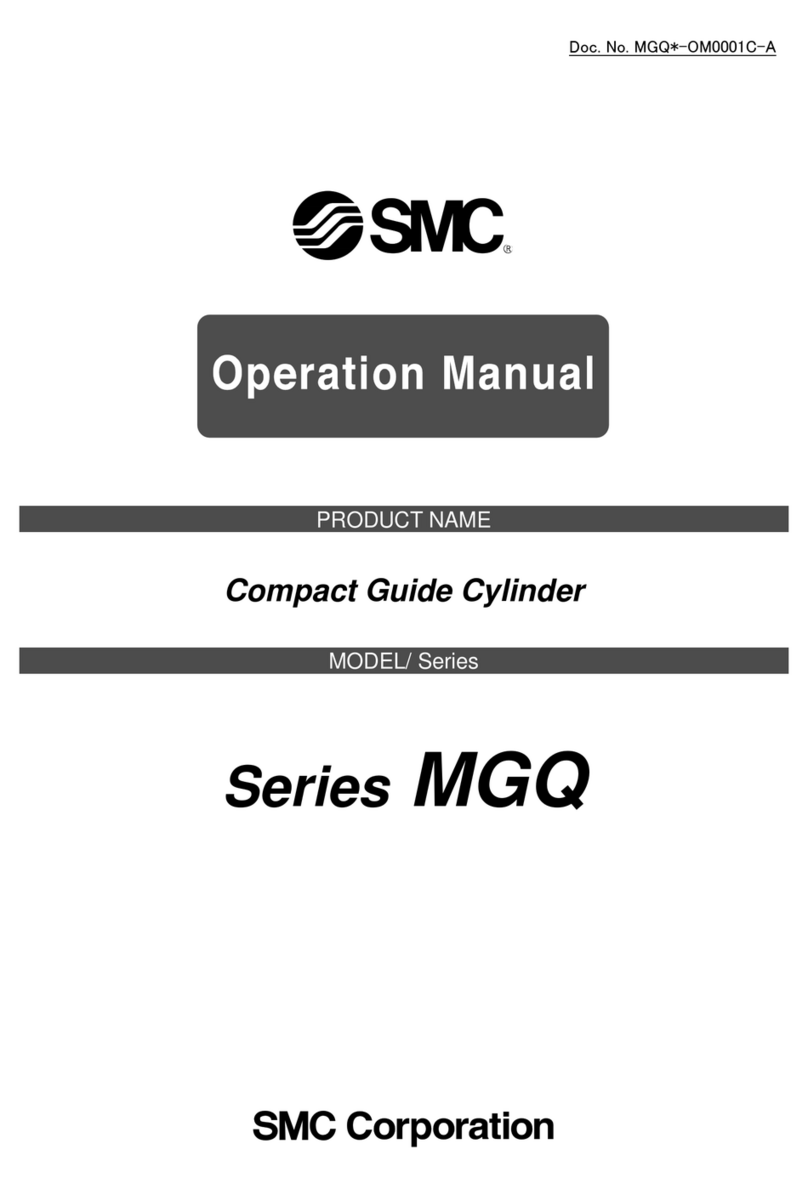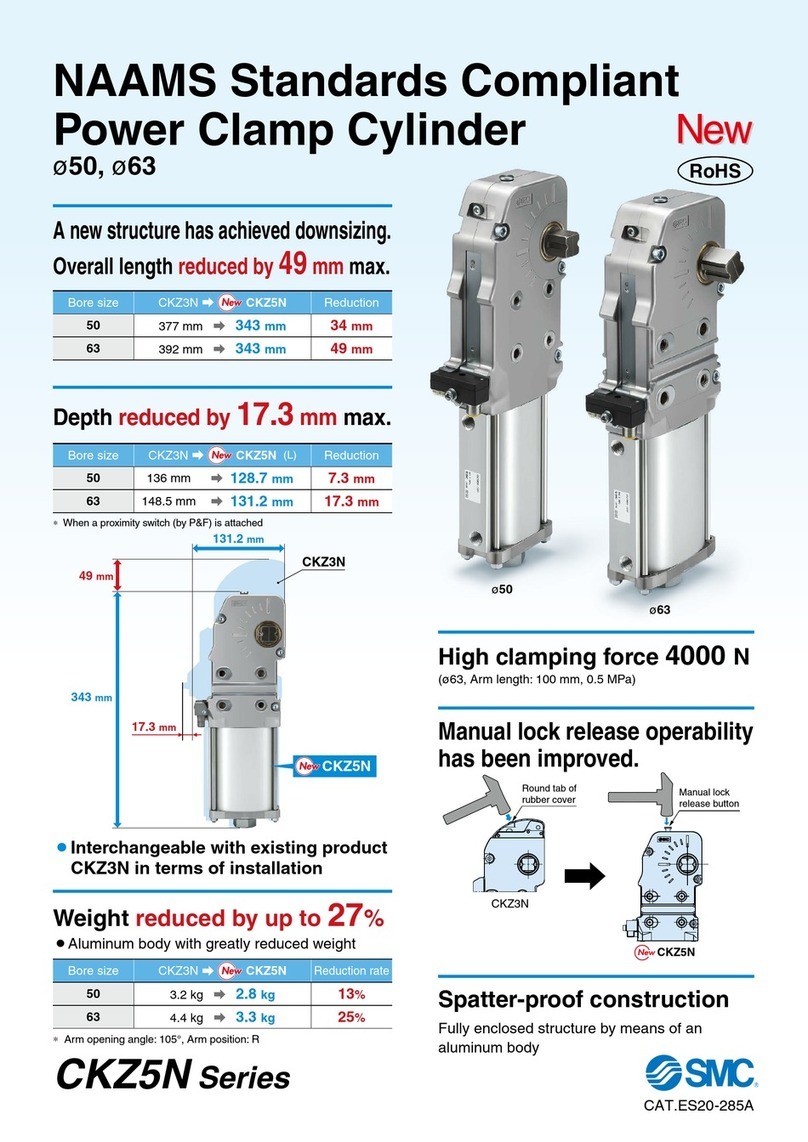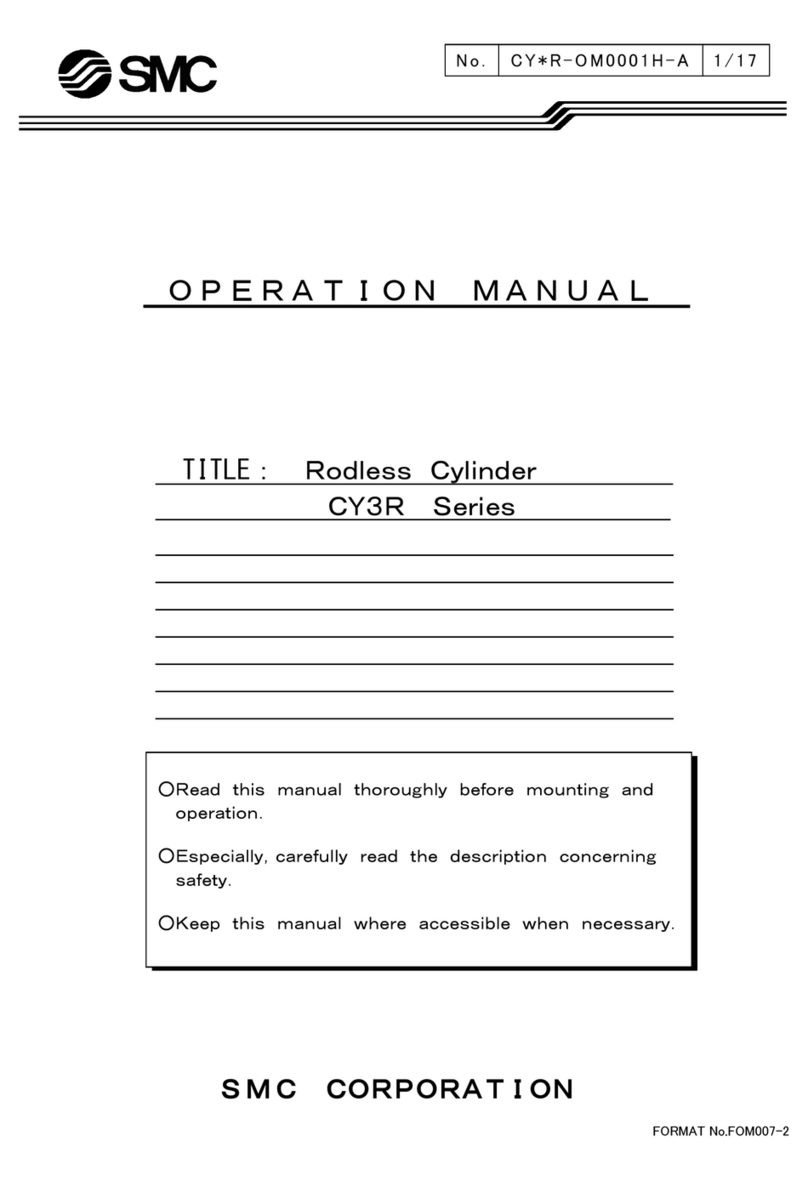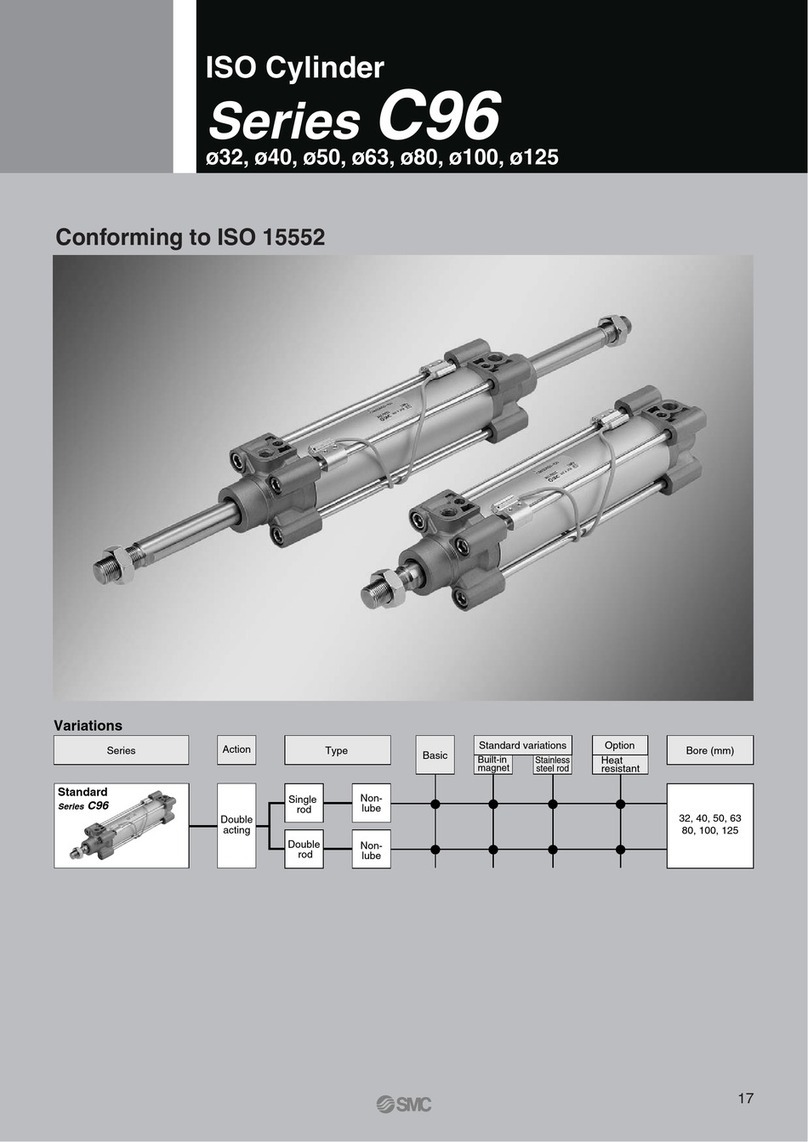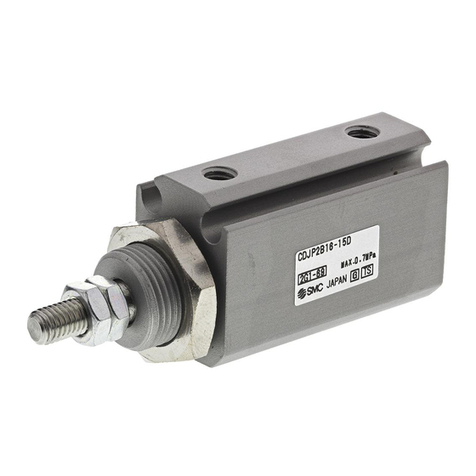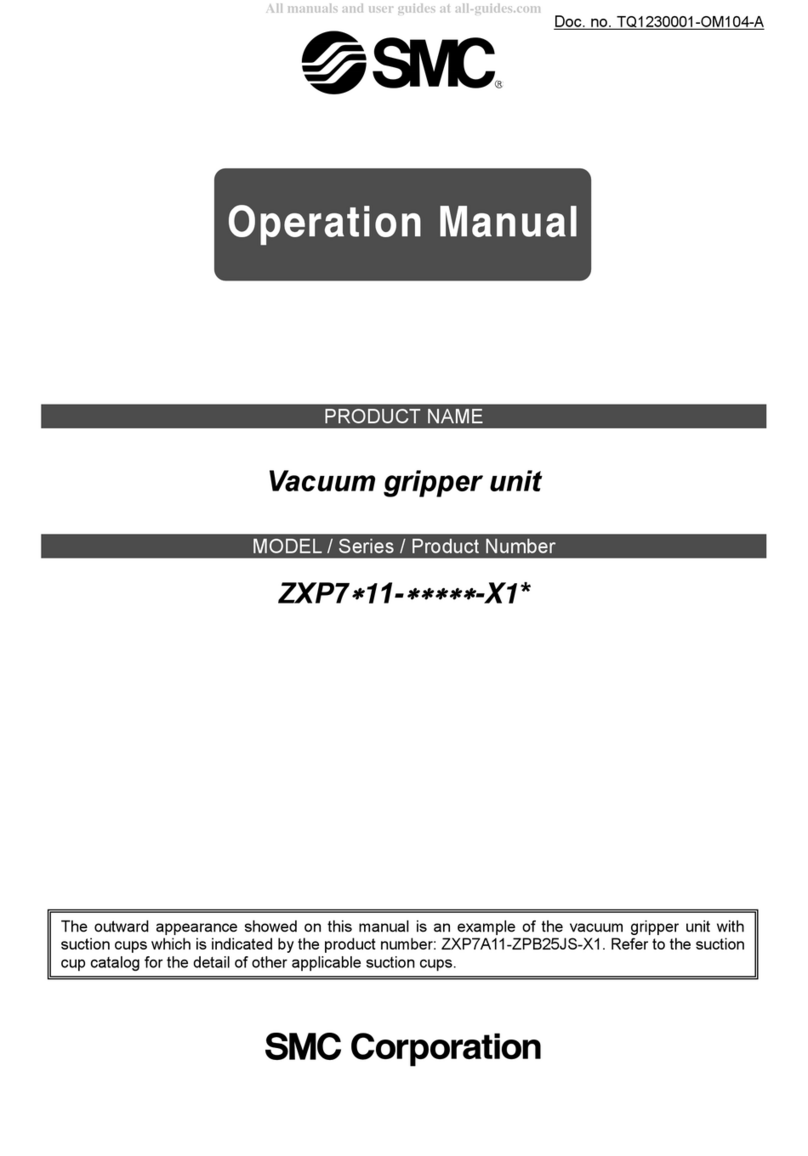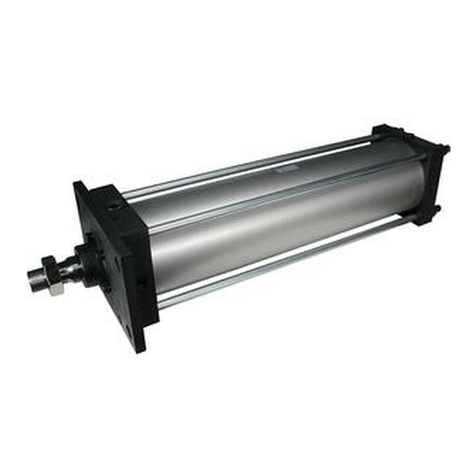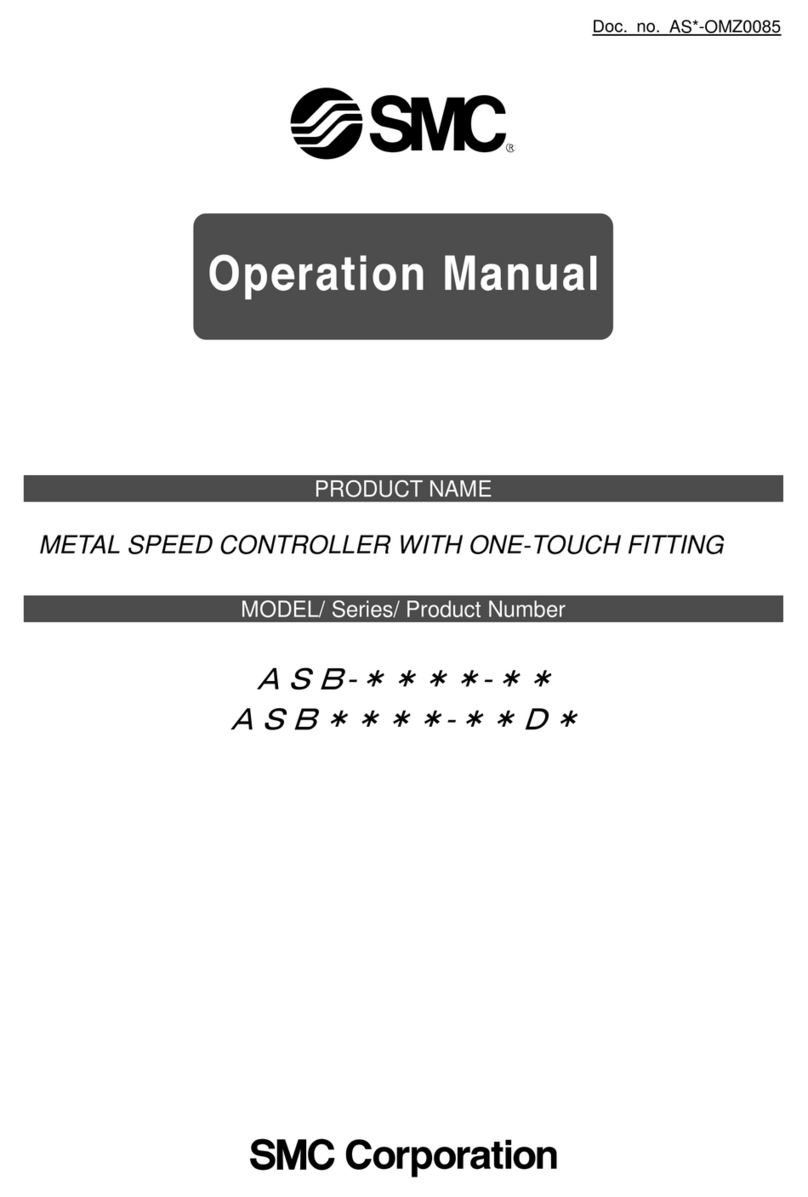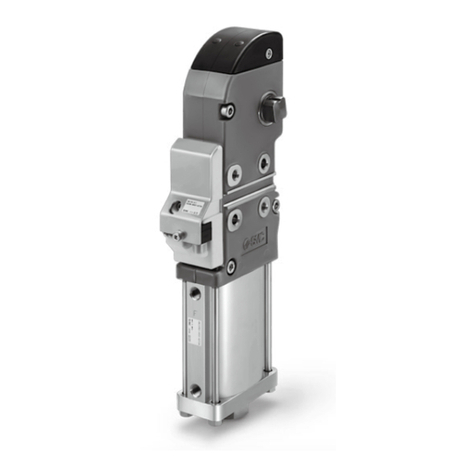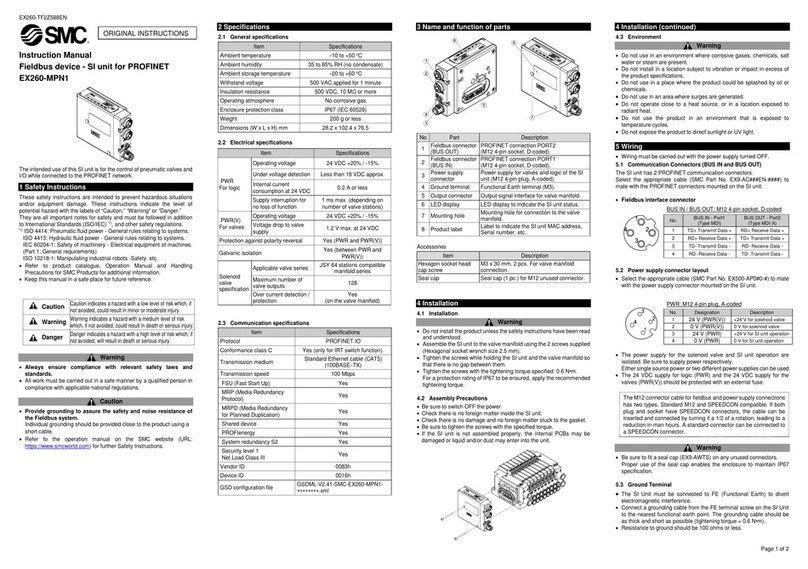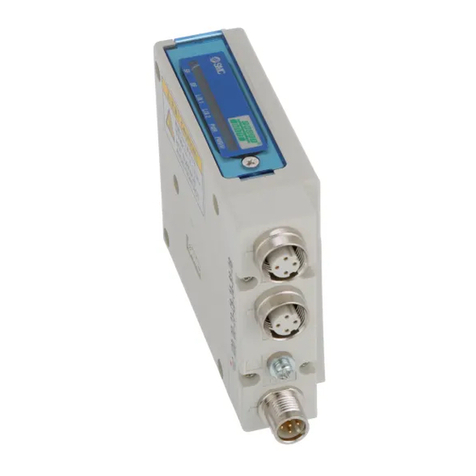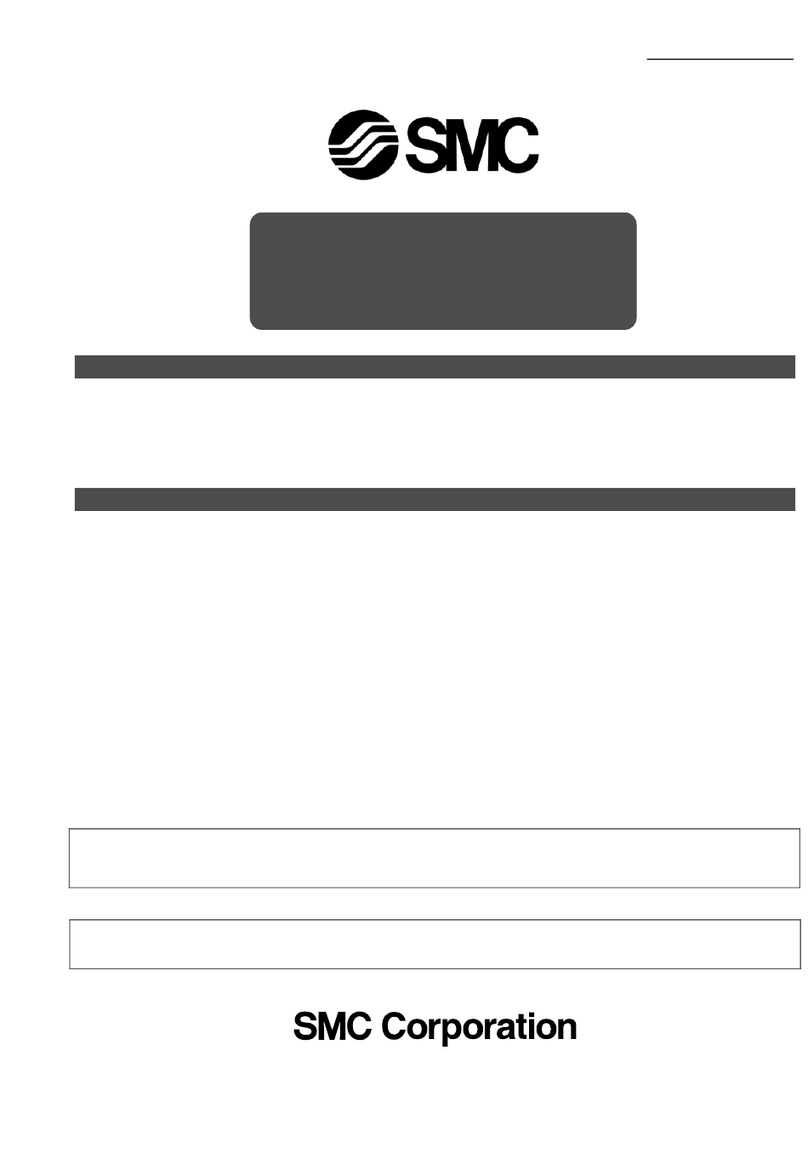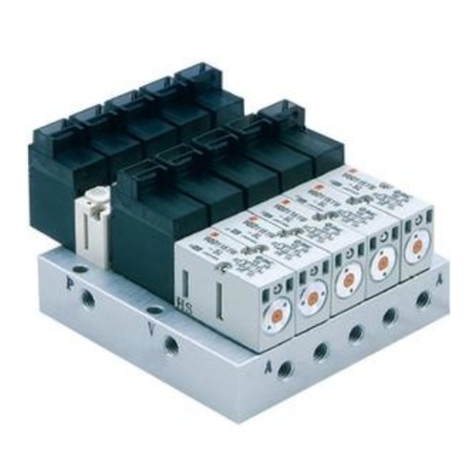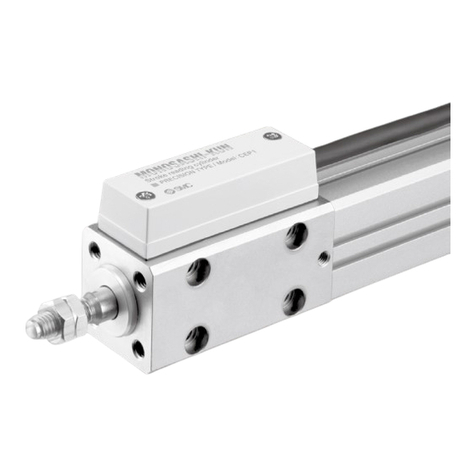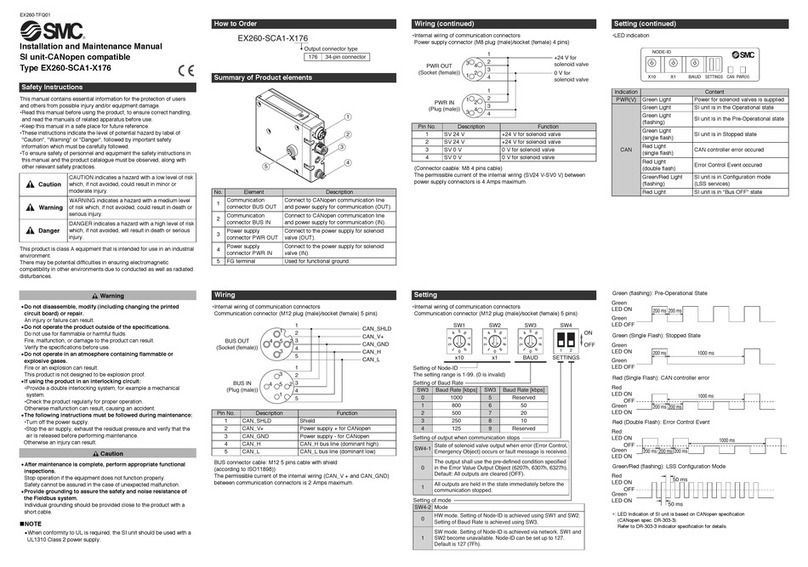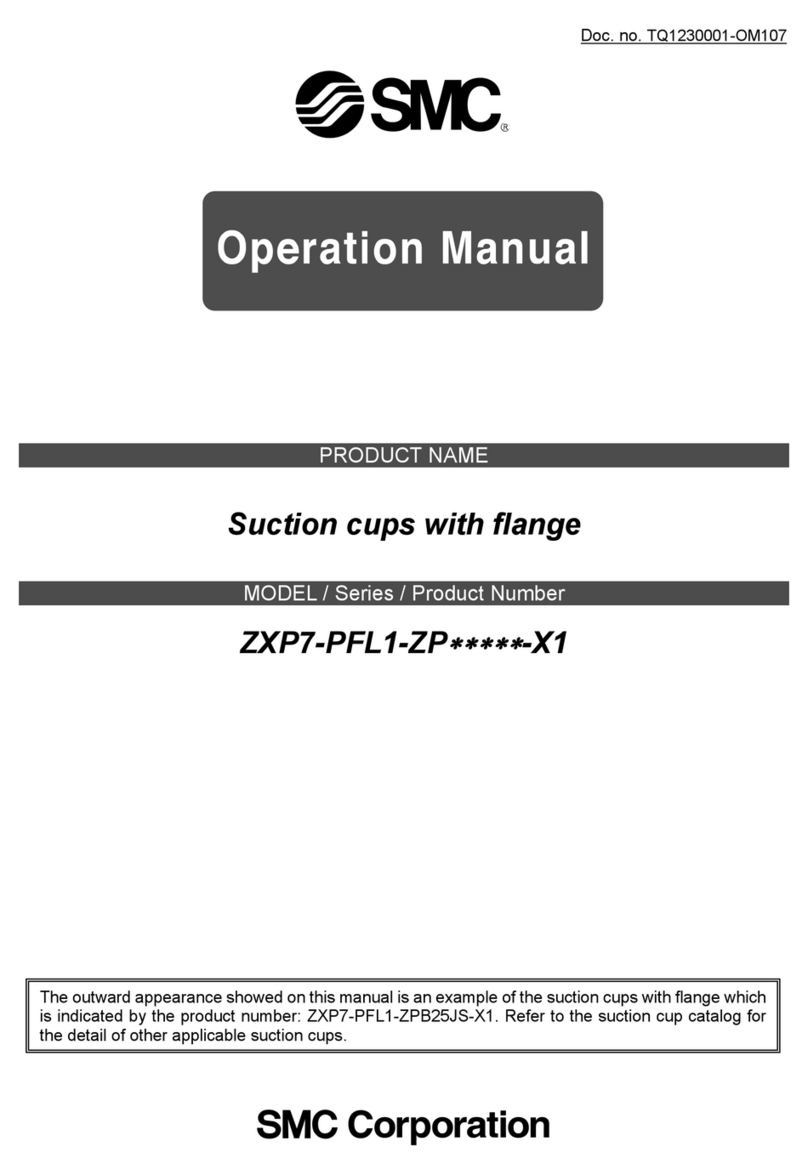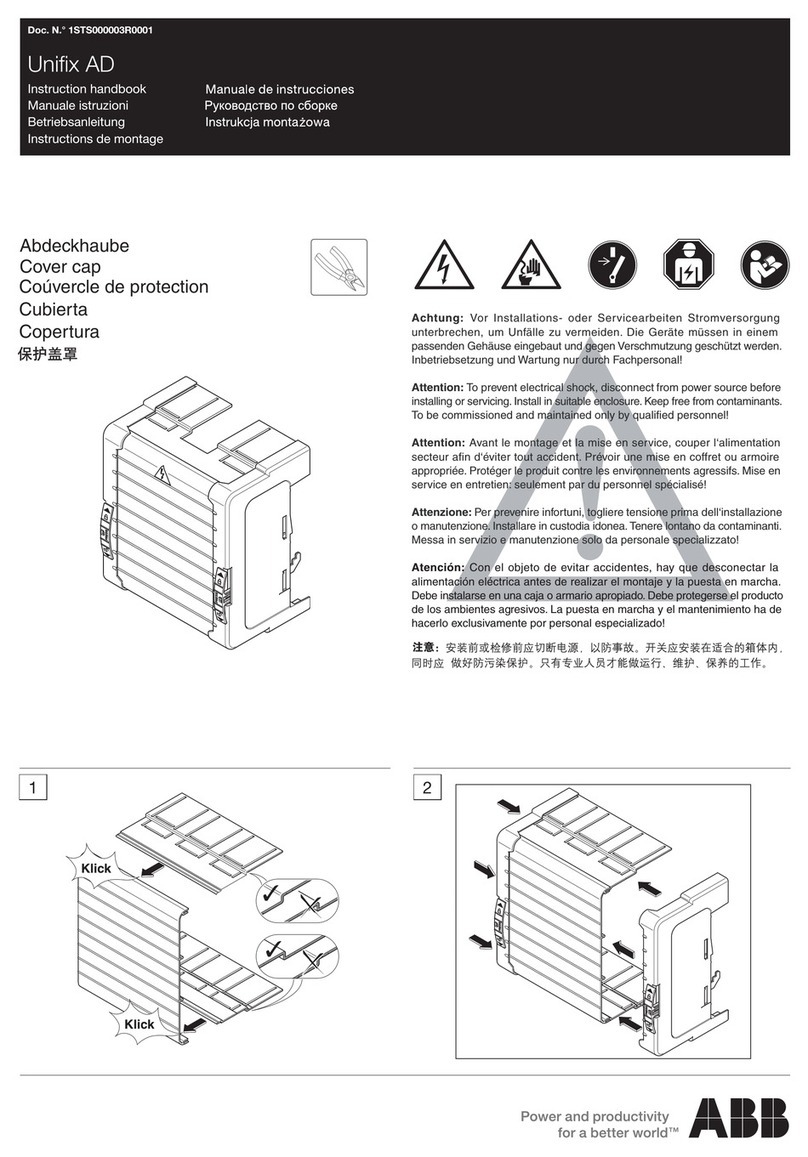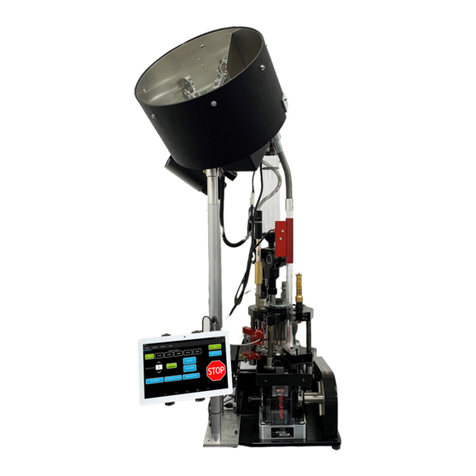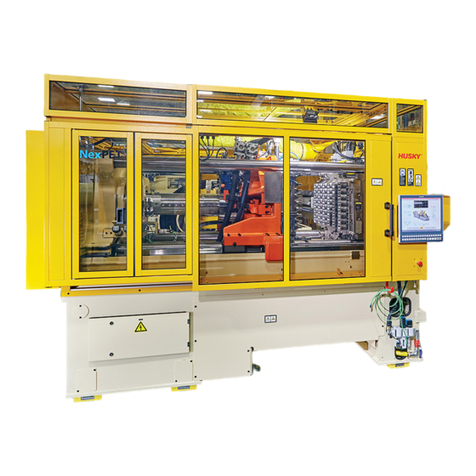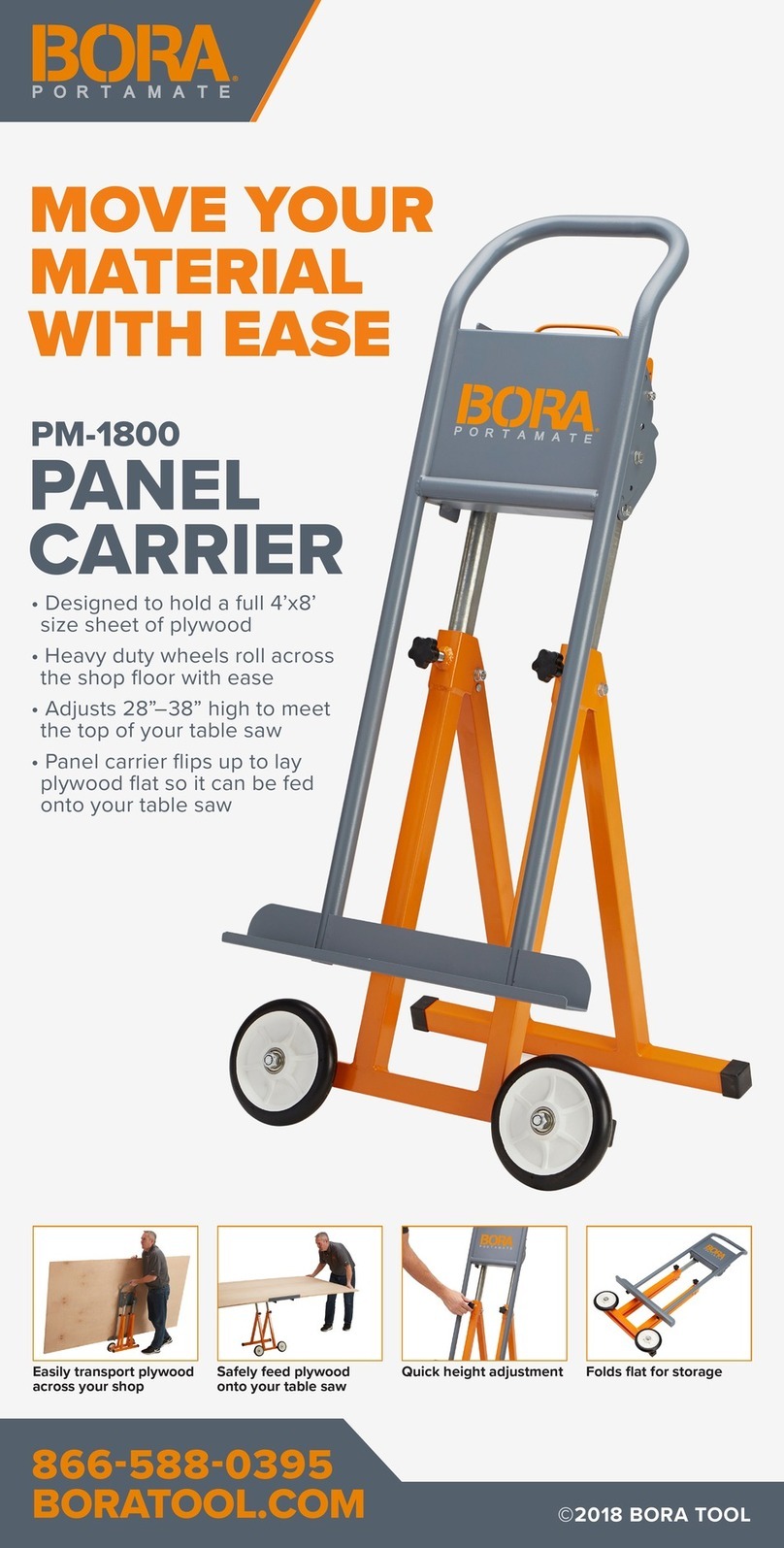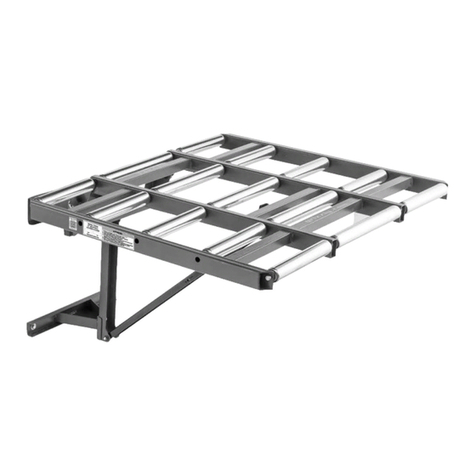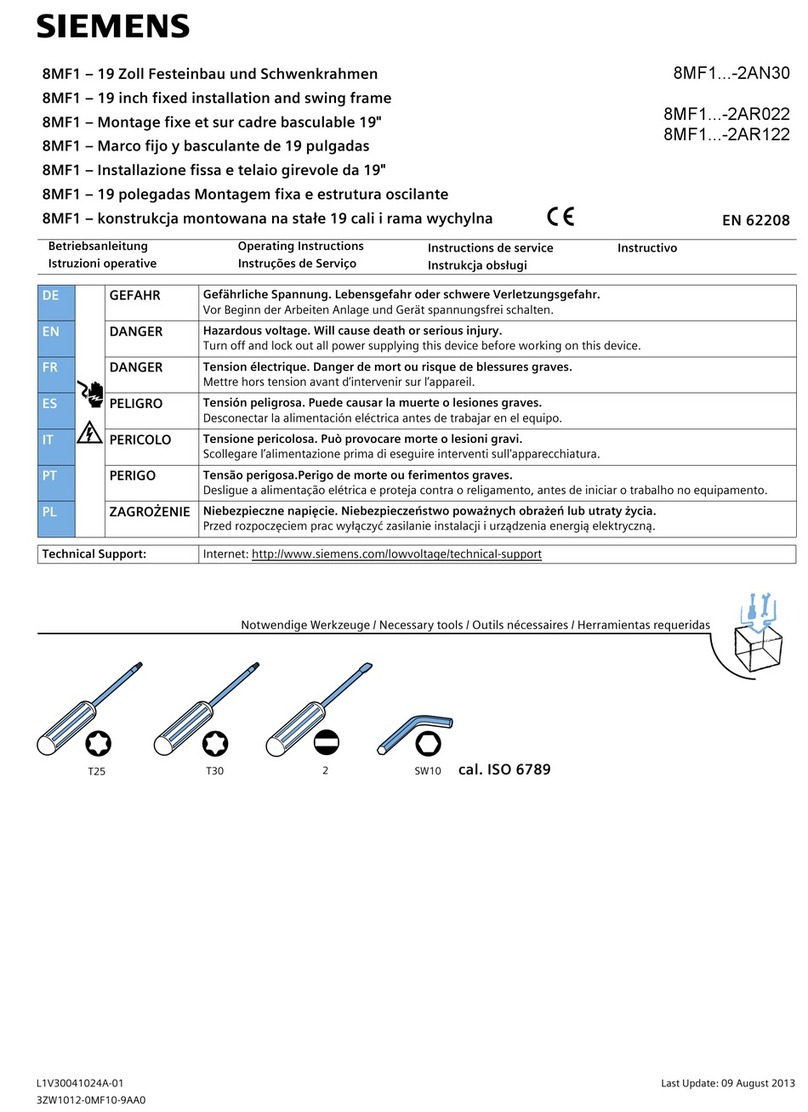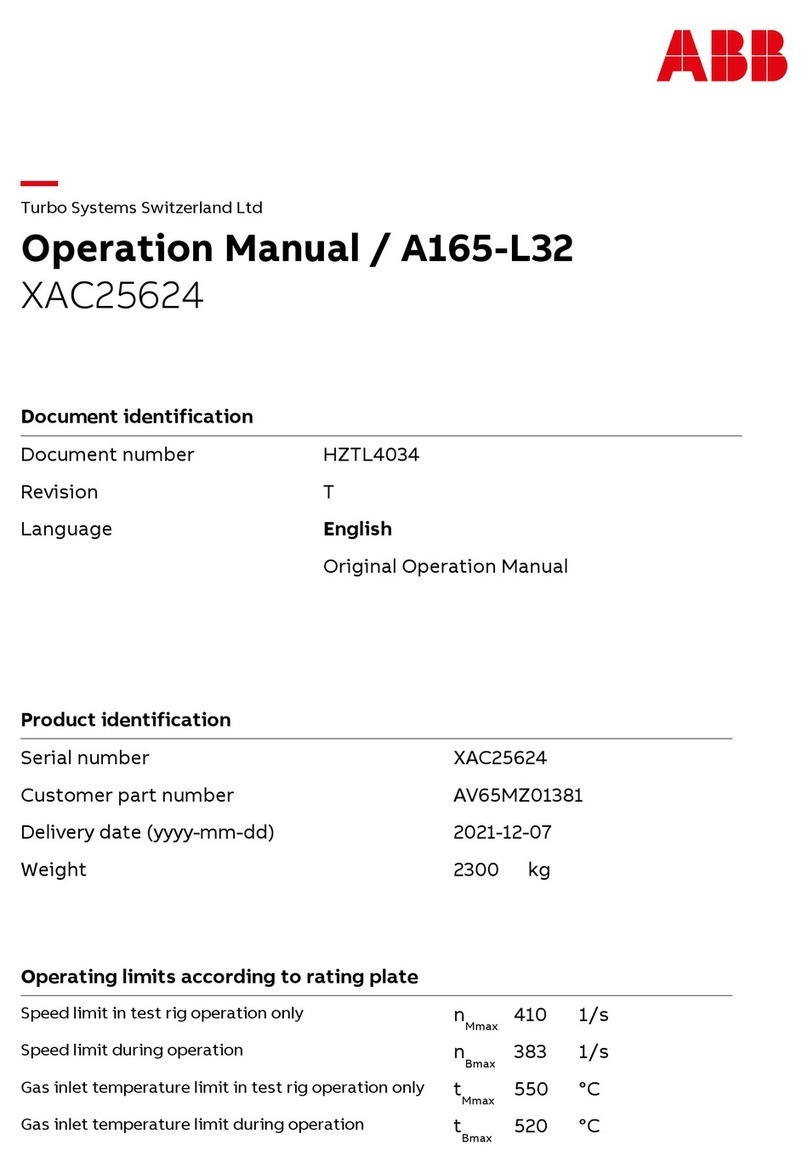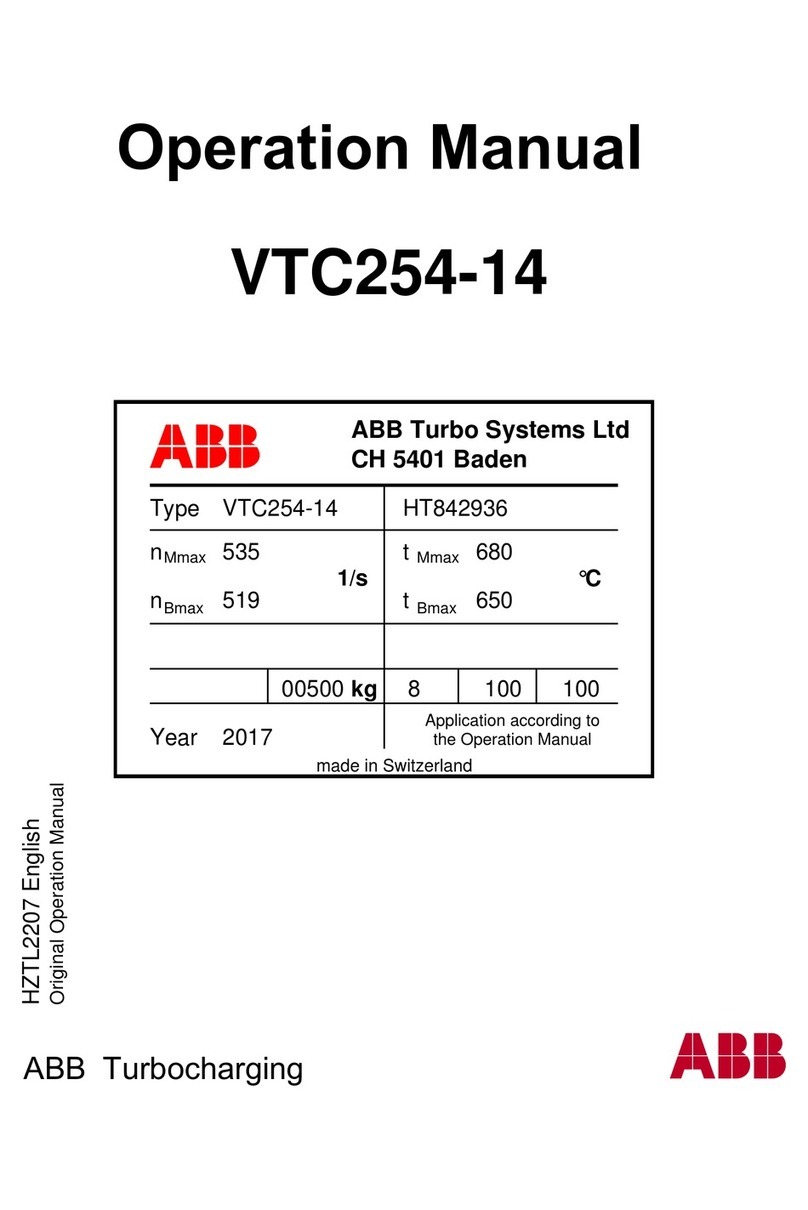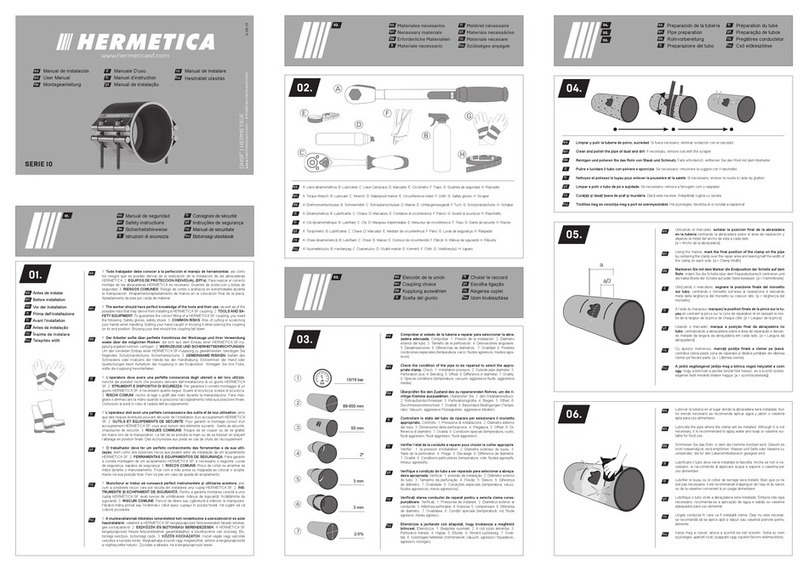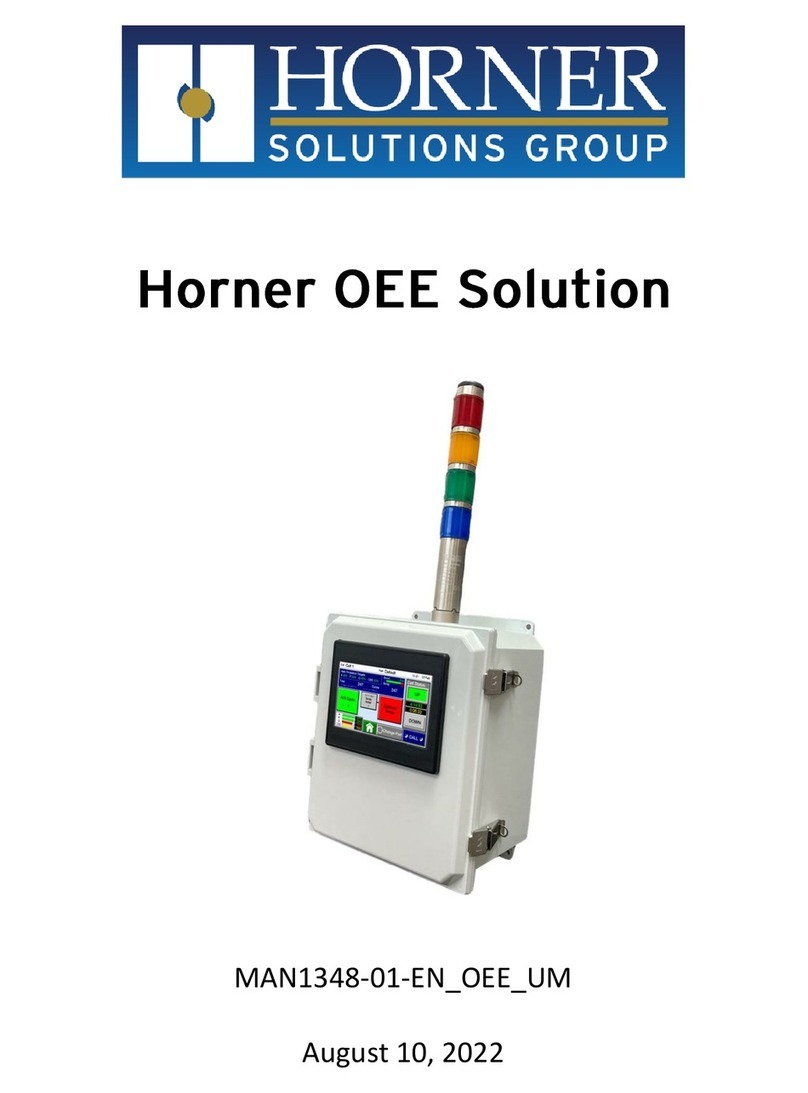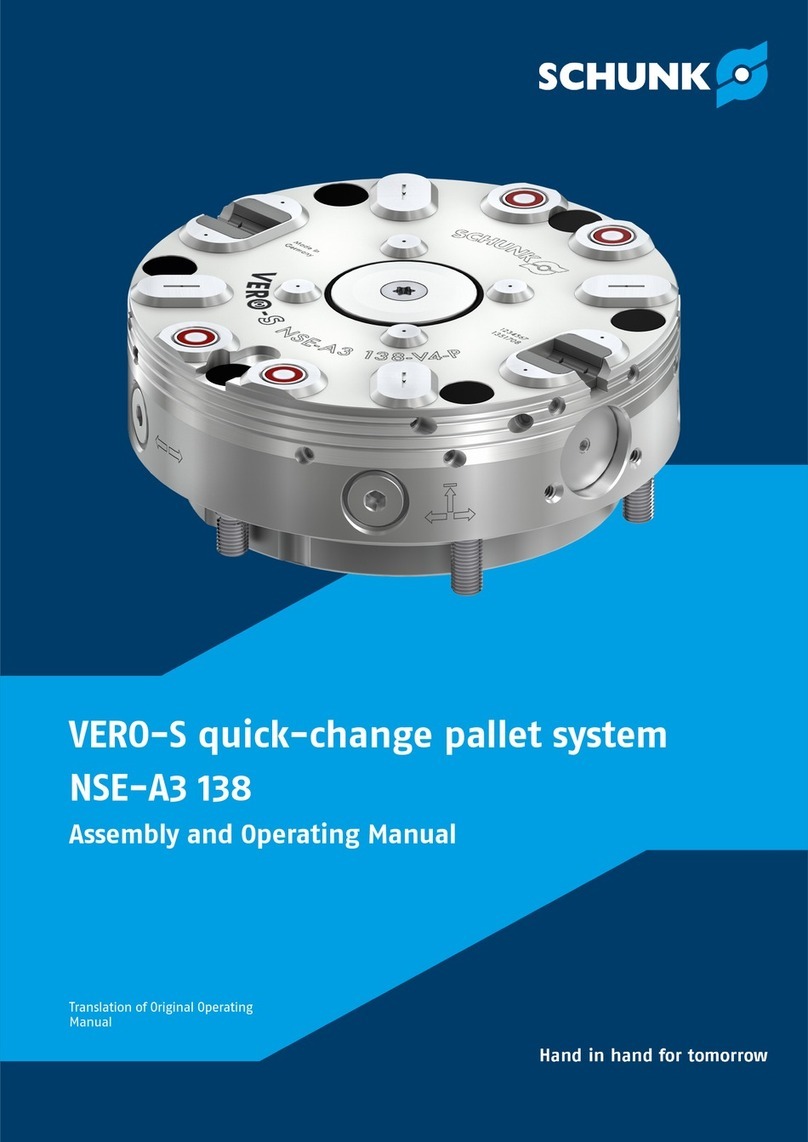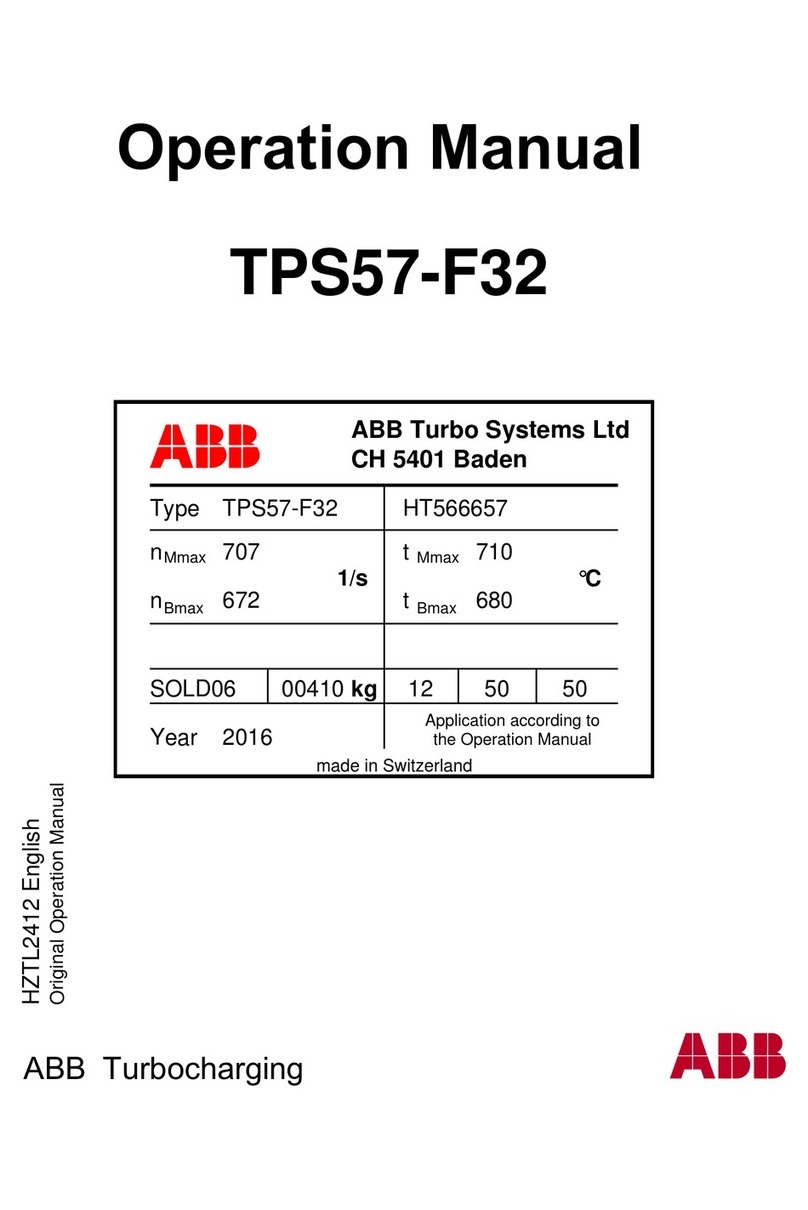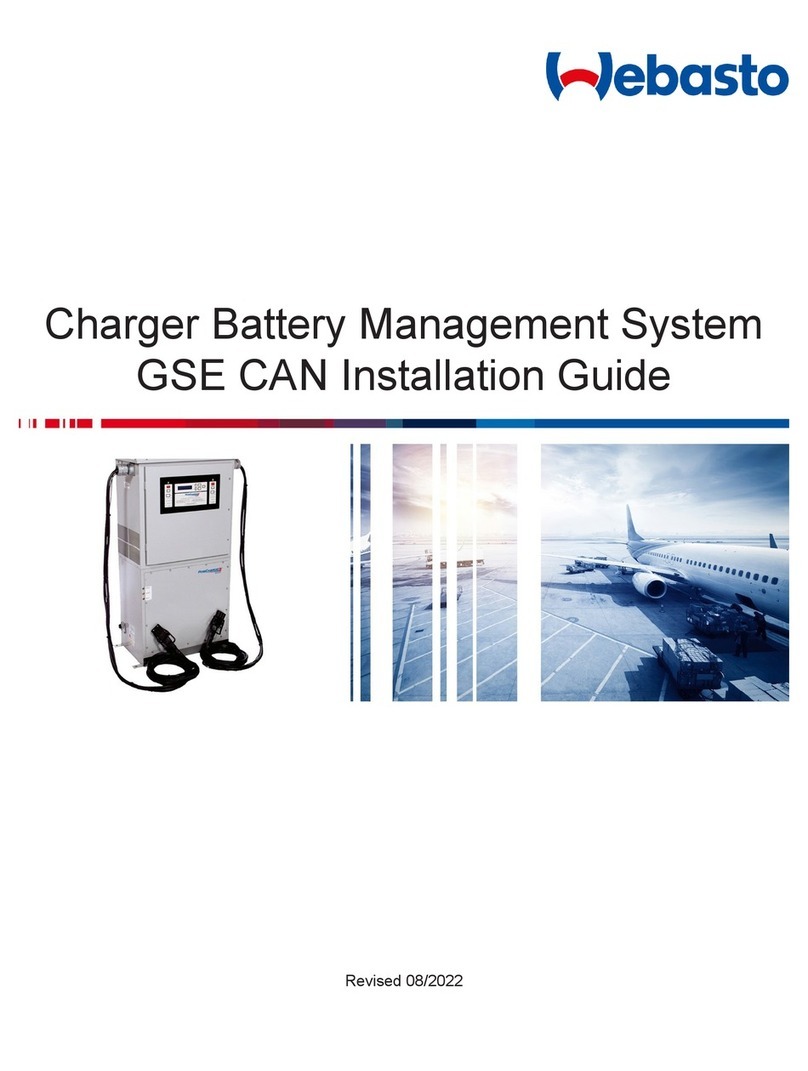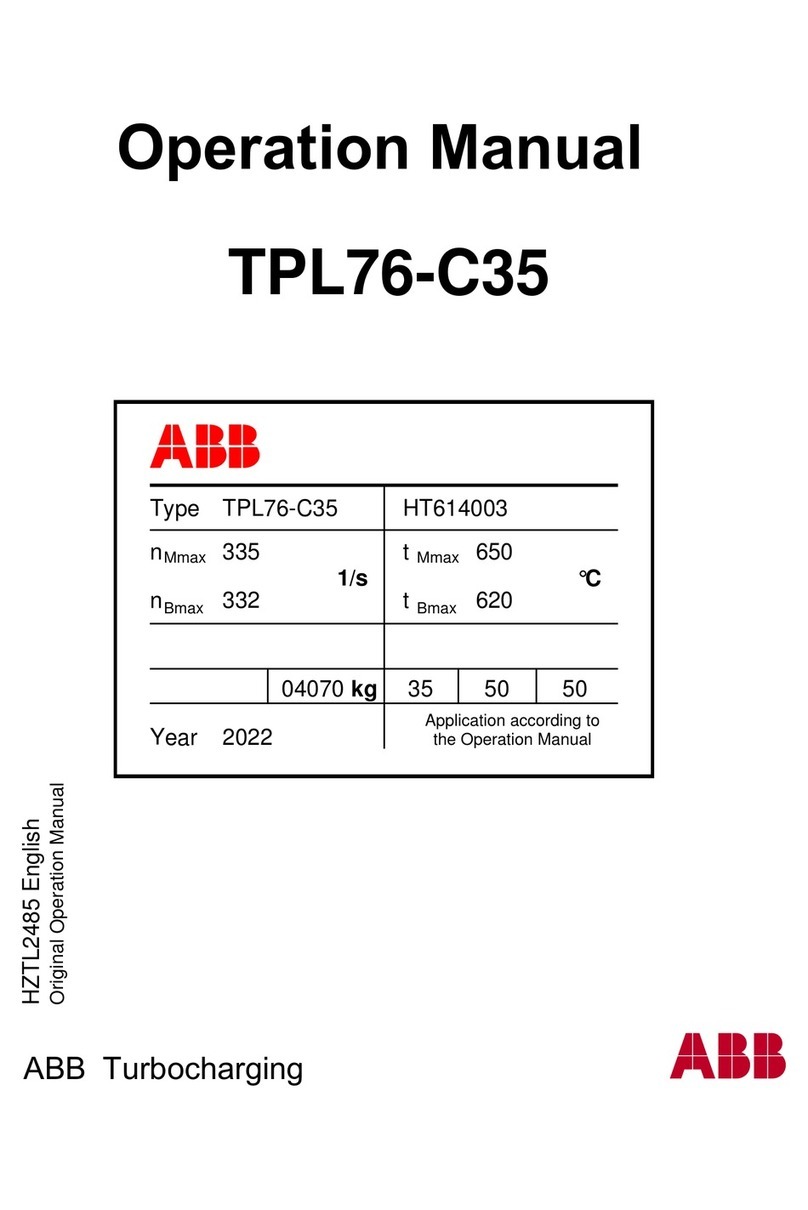
- 4 -
Specific Product Precautions
1. Note the weight of the stainless steel products.
Since the weight of stainless steel cylinders is approximately 1.5
to 3 times heavier than the standard products (with aluminum
body), be careful when calculating weight estimates. Also, when
mounting the cylinder on equipment where vibration is expected,
avoid using single side brackets such as the flange type, and use
double side brackets such as the foot type instead.
Caution
1.Adjust the speed control for the environment in which
it will be used.
Speed adjustment may be changed
environment.
2.
Dust may accumulate on this product’s mounting
screws and brackets in some operating conditions.
Measures must be applied depending on the operating conditions
when mounting.
1.Fully consider the compatibility of stainless steel.
The corrosion resistance of stainless steel is not effective against
all media and corrosive environments. Corrosion proceeds rapidly
with strong hydrochloric acid, hydrofluoric acid,
temperature ammonium gas, etc. Therefore its compatibility to the
environment must be considered carefully.
2.Do not operate cylinders with auto switches in
environments where oil and chemicals are used.
Please contact SMC when operating in environments with
coolants, cleaning solvents, various oils or chemicals, as it may
cause adverse effects (faulty insulation, malfunction due to
swelling of the potting resin, and hardening of lead wires, etc) to
auto switches even in a short period of time. Even with the fluoro
rubber seal specification, the auto switch related parts (switch
body, mounting bracket, and built-in magnet) are identical to the
standard specifications. Therefore, consult with SMC regarding
the cylinder’s compatibility (such as chemical resistance) with an
environment (chemicals, etc.) before operating.
3. Do not immerse the cylinder in water or chemicals.
When the cylinder is operated in a condition with water pressure,
1.Generally, use nitrile rubber (NBR) seals with liquids
that do not contain chlorine and sulfur, and use fluoro
rubber (FKM) seals with liquids that contain chlorine
and sulfur.
However, depending on the type and the brand of liquid (such as
cleaning solvent) that splashes on the cylinder, the operating life
of seals may be reduced dramatically. In cases where special
additives are used, or where liquid caused trouble with the current
nitrile or fluoro rubber seals in the past, request an investigation
or set up a test period for the use of the seals。
2.
Even the fluoro rubber specification may not be
applicable depending on the type of chemicals and the
operating temperature. Therefore, be sure to verify the
seal's applicability before use.
the fluid leaks into the cylinder in the early stages. In the worst
case, the fluid may back flow inside the piping and damage the
solenoid valve.
Caution
1.
Avoid installing and using a cylinder inside a food
zone.
<Not installable>
Food zone・・・・・・・・・・An environment where food which will be
sold as merchandize, directly touches the
cylinder’s components.
<Installable>
Splash zone・・・・・・・An environment where food which will not
be sold as merchandize, directly touches
the cylinder’s components
Non-food zone・・・・・・An environment where there is no
1.Do not rotate the cover.
If a cover is rotated when installing a cylinder or screwing a
fitting into the port, it is likely to damage the junction part with
cover.
2. When using pins, apply grease, etc., in order to
prevent them from degrading of shape and rusting.
2. When cleaning solvent or chemicals splashes on a
cylinder, the service life may be extremely shortened.
Please contact SMC for details.
1.For details about operating precautions, refer to for the
CG1 series.
1.If cleaning the rot
ating part, grease may leak out,
which shortens product service life. Thus, cleaning
must be as infrequent as possible.
2.If excess water gets into mounting holes, unwanted
bacteria may reproduce. Plug them with plug bolts or
external covers to avoid this.
3.When cleaning cylinders with steam, do it as quickly
as possible, keeping the cylinder’s temperature range
in mind.
4. When cleaning cylinders with a brush, etc., do not
apply excessive force to the weaker parts, such as
auto switch lead wire, etc.
